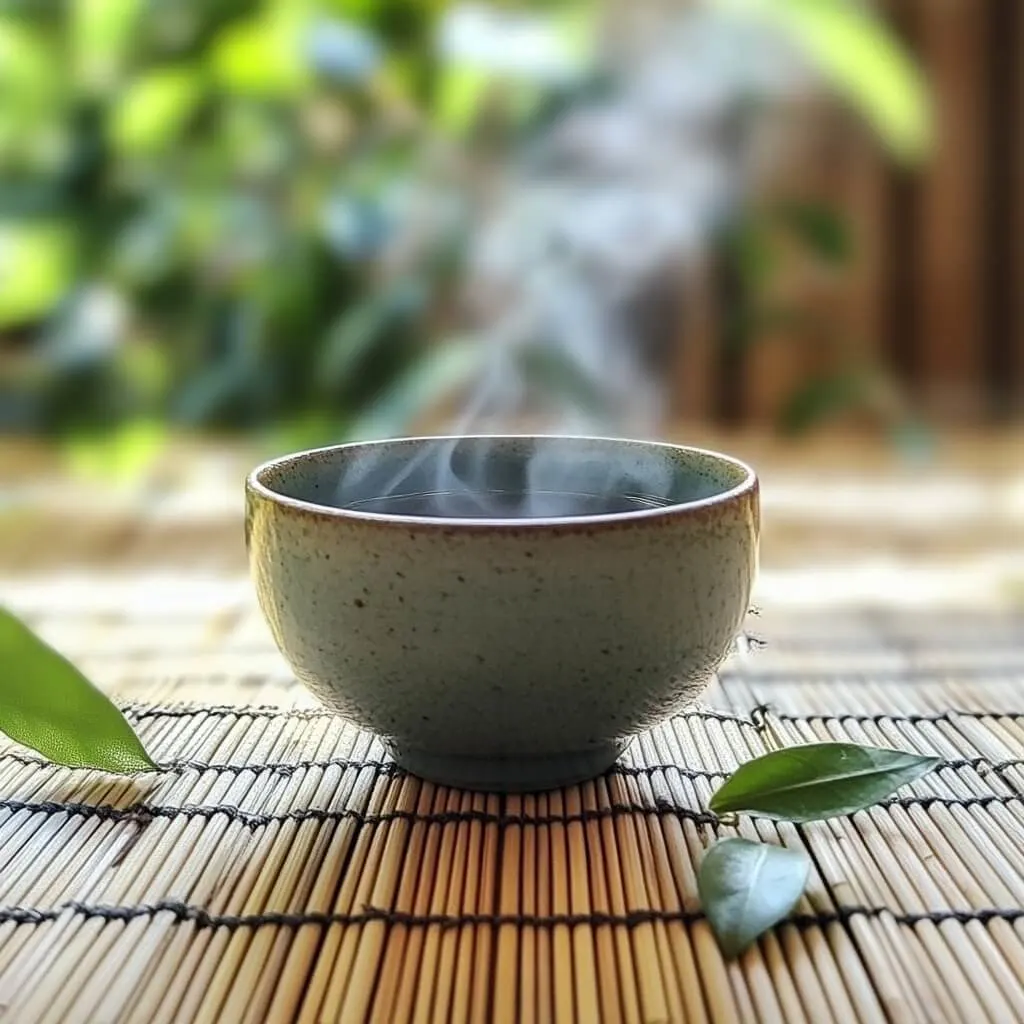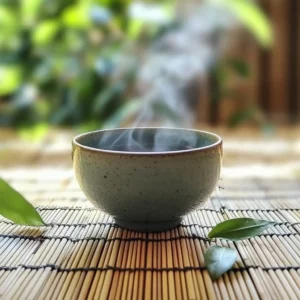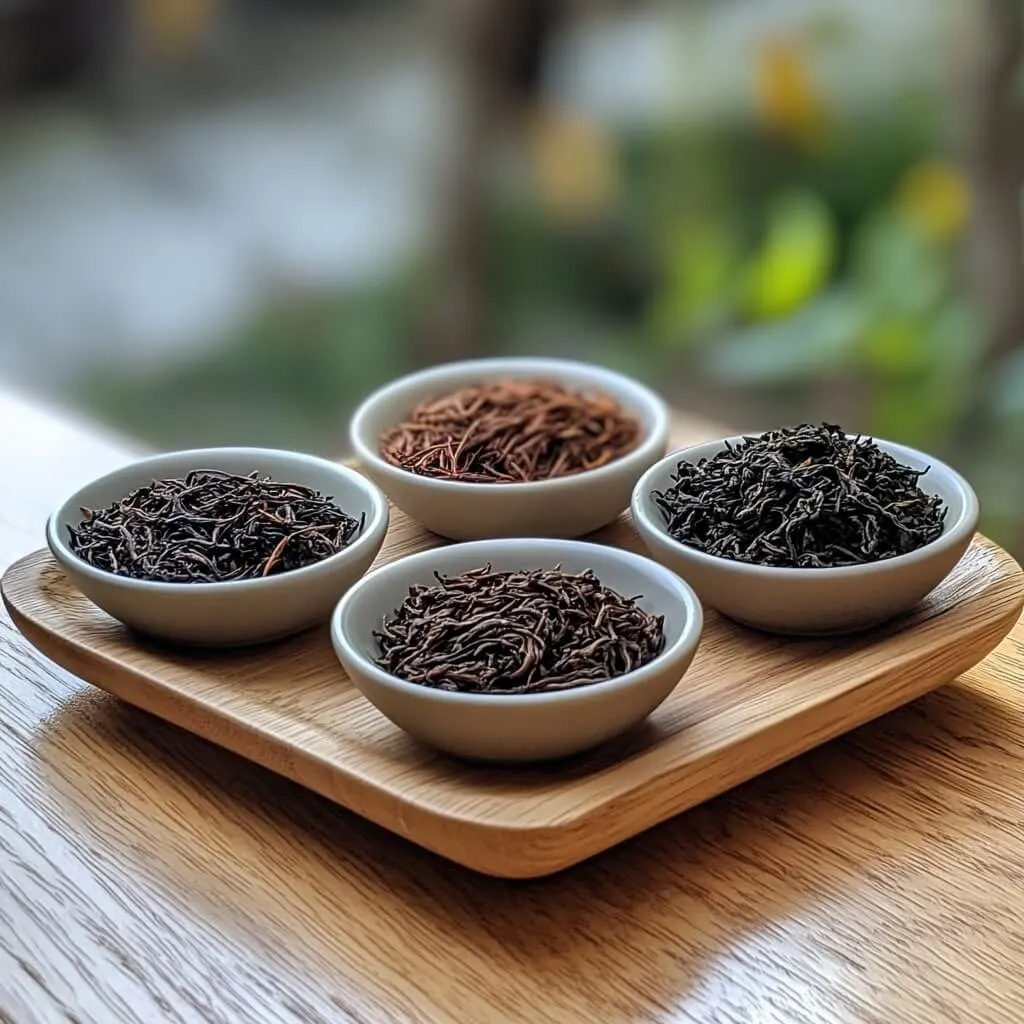Over the past few years, there’s been a growing buzz about natural ways to support weight loss without pharmaceutical prescriptions. Among the most talked-about trends is the Japanese Mounjaro recipe, a herbal tea blend inspired by centuries-old Japanese practices. Often referred to as the natural Japanese Mounjaro, this tea mimics the effects of GLP-1 medications like Mounjaro (tirzepatide), yet it’s entirely plant-based.

So, what is Japanese Mounjaro? While it’s not an actual prescription drug, the tea draws from ancient Japanese herbalism and uses naturally occurring compounds to boost metabolism, reduce cravings, and support digestion. It’s become especially popular among those looking for a Japanese herb that mimics Mounjaro, but in a safer, side-effect-free form.
The rise of interest in this tea is part of a broader movement toward GLP-1 natural alternatives, with people turning to Eastern medicine and functional teas to promote health. In this article, we’ll break down the ingredients, show you how to make Japanese Mounjaro tea, explore its weight loss benefits, compare it to pharmaceutical options, and even provide a free downloadable PDF guide for your wellness journey.
Table of Contents
Table of Contents
What Is Japanese Mounjaro?
Understanding the Japanese Mounjaro Tea Concept
The term Japanese Mounjaro doesn’t refer to a brand or pharmaceutical product. Instead, it’s a nickname coined by wellness communities for a tea blend that functions like a natural tirzepatide—a compound known to regulate blood sugar, insulin sensitivity, and appetite.
Inspired by traditional Japanese medicine, the Japanese Mounjaro tea focuses on natural herbs believed to stimulate similar physiological pathways to GLP-1 receptor agonists (the same way medications like Mounjaro and Ozempic work). That’s why many call it the natural Japanese Mounjaro—not a replacement for prescriptions, but a functional tea that supports metabolism naturally.
Why “Natural Japanese Mounjaro” is Gaining Popularity
There’s growing discomfort around the long-term side effects of GLP-1 prescription drugs, especially when used off-label for weight loss. That’s led many to seek natural GLP-1 alternatives. And here’s where Japanese tea culture shines.
The Japanese Mounjaro recipe is rooted in age-old practices that use plants like Pu-erh, dokudami, yomogi, and ashitaba, all rich in antioxidants, polyphenols, and metabolic stimulants. These herbs are known to promote satiety, aid digestion, and support liver detox.
What makes this tea stand out?
- It’s caffeine-free and gentle on the body.
- It’s part of a centuries-old wellness tradition.
- It contains a Japanese herb that mimics Mounjaro without synthetic compounds.
Natural doesn’t mean ineffective. Many users report reduced cravings and better control over emotional eating just days after adding this tea to their daily ritual.

Japanese Mounjaro Tea
Ingredients
- 1 tsp dried Ashitaba
- 1 tsp dried Yomogi
- 1/2 tsp Dokudami
- 1 tsp Pu-erh (or tea bag)
- 1/4 tsp Senna (optional)
- 2 cups filtered water
- Optional: lemon or fresh ginger
Instructions
- Bring 2 cups of water to a gentle boil.
- Add herbs to a teapot or French press.
- Steep for 8–10 minutes covered.
- Strain and serve. Enjoy warm or chilled.
Nutrition
Ingredients & Herbal Base — Ancient Japanese Herbs
Core Herbs in Japanese Mounjaro Tea and Their Traditional Uses
The heart of the Japanese Mounjaro recipe lies in its unique herbal blend, many of which have been used in Japanese Kampo (traditional herbal medicine) for centuries. These herbs work in synergy to promote digestion, support metabolic balance, and control appetite.

Here are some of the core ingredients in natural Japanese Mounjaro tea:
| Herb Name | Japanese Name | Traditional Use | Function in Tea |
|---|---|---|---|
| Ashitaba | 明日葉 (Ashitaba) | Promotes regeneration and blood flow | Supports liver function and fat burning |
| Yomogi | 蓬 (Yomogi) | Used in detox baths and digestion teas | Aids in appetite regulation |
| Dokudami | ドクダミ | Anti-inflammatory and purifying | Helps eliminate toxins |
| Pu-erh Leaf | プーアル茶 | Common detox tea in Asia | Enhances metabolism and digestion |
| Senna | センナ | Mild natural laxative | Supports colon cleansing |
Each of these herbs plays a role in creating a natural tirzepatide alternative that’s gentle but effective. Together, they stimulate digestive enzymes, modulate blood sugar levels, and improve the body’s natural detoxification system.
Unlike synthetic drugs, these plants have adaptive qualities, meaning they work with your body’s rhythm rather than against it. That’s part of what makes the natural Japanese Mounjaro so attractive—it honors both tradition and modern goals.
Japanese Herb That Mimics Mounjaro: How It Compares
While no herb exactly replicates the biochemical precision of tirzepatide (Mounjaro), there are herbs that stimulate similar GLP-1 pathways naturally.
The standout is Ashitaba—a green herb native to Japan’s Izu Islands. Research suggests Ashitaba contains chalcones, a class of flavonoids that:
- Enhance insulin sensitivity
- Encourage fat oxidation
- Reduce systemic inflammation
Another candidate is Yomogi, often found in teas and soups. It’s known to suppress appetite and regulate estrogen and cortisol levels, two major players in weight gain, especially for women.
Many users refer to this herbal mix as the Japanese herb that mimics the effects of Mounjaro—not because it’s identical, but because it delivers the benefits of appetite control, reduced cravings, and better metabolic health in a gentle, natural form.
Unlike pharmaceuticals, this herbal recipe comes with no synthetic additives, no injections, and virtually no side effects, making it perfect for those looking to start with a gentler path to wellness.
How to Make Japanese Mounjaro Tea
Natural Japanese Mounjaro Tea Recipe (Step-by-Step)
The beauty of the Japanese Mounjaro tea recipe lies in its simplicity. Using a few ancient herbs and a brewing method that retains their nutrients, you can make this natural tea at home without needing any fancy tools.

Here’s a step-by-step guide to making the Japanese Mounjaro recipe:
🧾 Ingredients (Makes 2 servings)
| Ingredient | Quantity |
|---|---|
| Dried Ashitaba leaves (or powder) | 1 tsp |
| Yomogi (mugwort) | 1 tsp |
| Dokudami (houttuynia cordata) | 1/2 tsp |
| Pu-erh leaf (loose or teabag) | 1 tsp or 1 bag |
| Senna leaves (optional) | 1/4 tsp (use sparingly) |
| Filtered water | 2 cups |
| Lemon or ginger (optional) | To taste |
🔥 Preparation Instructions
- Boil Water
Bring 2 cups of filtered water to a gentle boil. Don’t overheat as it may damage herbal properties. - Add Herbs
In a teapot or French press, add all herbs. If using powdered forms, wrap them in a tea infuser or cheesecloth to prevent residue. - Steep for 8–10 Minutes
Pour hot water over the herbs and let them steep. Cover the pot to retain essential oils and aroma. - Strain and Serve
Strain into your favorite cup. Add lemon slices or fresh ginger for enhanced flavor and additional detox benefits. - Enjoy Warm or Iced
You can drink it warm in the morning or chill it for a refreshing iced tea. Best consumed on an empty stomach.
🔄 Drink this tea once daily for the first week. You may increase to twice a day after assessing how your body reacts.
Tools, Quantities, and Tips for the Best Brew
- Tool Options: A French press works best, but you can also use a stovetop kettle with a fine strainer.
- Herb Sources: Ensure herbs are organically grown and non-irradiated—this affects potency.
- Batch Brewing: You can triple the recipe and store it in a mason jar in the fridge for 2–3 days.
- Caution with Senna: This herb promotes bowel movements. Use sparingly, especially if you’re sensitive.
📊 Nutritional Insight (Per Cup)
| Nutrient Focus | Benefit |
|---|---|
| Antioxidants | Reduces inflammation and aging |
| Chlorophyll (from Ashitaba) | Improves cellular detox and oxygenation |
| Flavonoids | Helps regulate blood sugar and cravings |
| Mild Laxatives | Encourages waste elimination |
This natural Japanese Mounjaro recipe may be herbal, but it’s powerful. It offers a gentle metabolic lift and can help break sugar addiction patterns over time when taken consistently.
Weight Loss & Detox Benefits of Japanese Mounjaro
How It Aids in Digestion and Boosts Metabolism
The Japanese Mounjaro tea for weight loss works not as a magic pill but as a natural metabolic harmonizer. Its herbal ingredients were chosen not just for tradition—but for their ability to target three major fat-loss systems in the body:
- Digestive Efficiency
Herbs like Yomogi and Dokudami stimulate digestive enzymes, breaking down fats and proteins more efficiently. This means less bloating and faster nutrient absorption. - Metabolic Activation
Ashitaba is rich in chalcones, plant compounds that stimulate thermogenesis (your body’s ability to burn calories for heat). Combined with Pu-erh, which helps regulate lipid metabolism, you get a slow-burn metabolic lift without caffeine jitters. - Appetite Suppression
Several of the herbs in this tea gently regulate ghrelin, the hunger hormone, helping you feel full sooner and resist mindless snacking.
A cup before meals may reduce cravings by up to 40%, according to anecdotal Reddit reports on the Japanese Mounjaro recipe.
Scientific Evidence Behind Japanese Mounjaro for Weight Loss
While the tea itself isn’t a branded supplement, its individual ingredients have been studied extensively:
- Ashitaba chalcones have shown potential to suppress visceral fat accumulation in mouse models. [Study source: PubMed]
- Pu-erh tea is linked to lipid reduction and gut microbiome modulation, helping reduce belly fat.
- Dokudami is a natural diuretic that aids in toxin flushing and reduces inflammation-related water retention.
Combined, these effects mimic some of the GLP-1 benefits seen in medications like Mounjaro:
| Effect | Mounjaro (Drug) | Japanese Mounjaro Tea |
|---|---|---|
| Appetite Suppression | Yes | Yes (Herbal Action) |
| Slows Gastric Emptying | Yes | Mild Effect |
| Increases Insulin Sensitivity | Yes | Yes (Ashitaba) |
| Fat Oxidation | Moderate | Moderate (Chalcones) |
| Side Effects | Common (nausea, bloating) | Rare/Minimal |
So while it’s not a pharmaceutical equivalent, the Japanese Mounjaro tea for weight loss offers a holistic, low-risk path to detox, appetite control, and long-term fat reduction.
✅ Early Results: What to Expect in the First 7 Days
Here’s what many users have reported after one week of daily use:
| Day | Expected Effect |
|---|---|
| 1–2 | Reduced bloating, more bathroom regularity |
| 3–4 | Fewer food cravings, stable energy |
| 5–6 | Noticeable reduction in belly puffiness |
| 7 | Increased satiety with smaller meals |
Remember, consistency matters. Unlike medications, herbs work best when taken consistently over time. Consider combining the tea with a low-glycemic, whole foods diet to maximize fat loss and blood sugar balance.
Comparing Japanese Mounjaro to Prescription GLP-1s
What is GLP-1 and How Mounjaro (Tirzepatide) Works
GLP-1 stands for Glucagon-Like Peptide-1, a hormone your body naturally produces to regulate blood sugar, slow digestion, and reduce hunger. Drugs like Mounjaro and Ozempic are GLP-1 receptor agonists, meaning they amplify this hormone’s effects artificially.
Here’s how Mounjaro works:
- Slows gastric emptying so food stays in your stomach longer, making you feel full
- Regulates insulin and reduces blood sugar spikes
- Suppresses appetite by acting directly on the brain’s hunger centers
But here’s the downside:
These benefits often come with side effects like nausea, constipation, headaches, and bloating. Long-term use may also lead to dependency or issues when stopping treatment.
That’s where the idea of a natural Japanese Mounjaro alternative becomes powerful. It’s not about replacing a drug—it’s about supporting the same systems with herbs and whole plants.
Natural vs Pharmaceutical: Can Herbs Mimic Mounjaro?
So how close is the Japanese Mounjaro tea to prescription Mounjaro?
Let’s break it down:
| Feature | Mounjaro (Drug) | Japanese Mounjaro Tea |
|---|---|---|
| Requires Prescription | Yes | No |
| Active Ingredient | Tirzepatide (Synthetic) | Ashitaba, Yomogi, Dokudami |
| GLP-1 Effect Stimulation | Direct & potent | Indirect but supportive |
| Appetite Regulation | Strong | Moderate (natural appetite control) |
| Metabolic Boost | Moderate | Gentle and consistent |
| Side Effects | Common | Rare to none |
| Cost | Expensive ($900+/mo) | Low-cost (under $20/month) |
| Long-Term Safety Data | Limited | Backed by centuries of use |
Many herbalists and natural health advocates describe the Japanese Mounjaro recipe as a “functional mimic”—it doesn’t replace GLP-1 drugs but it supports the same physiological goals naturally:
- Blood sugar balance
- Weight management
- Appetite control
- Reduced cravings
For individuals unable or unwilling to take synthetic medications, this tea provides a safer, holistic alternative that aligns with body rhythms rather than overriding them.
🔄 Complement or Replace?
Some users on Reddit report using Japanese Mounjaro tea alongside a GLP-1 prescription to reduce dose requirements. Others have transitioned fully to herbal alternatives after initial weight loss.
Of course, always consult a healthcare provider before making medication changes, but the natural Japanese Mounjaro is quickly becoming the go-to entry point for those curious about GLP-1-style results—without the pharmacy.
Community Buzz & Reddit Reviews
What People Are Saying on Reddit and TikTok
As the interest in natural weight loss alternatives grows, the Japanese Mounjaro tea has been generating serious traction on platforms like Reddit, TikTok, and YouTube. Users searching for “natural Mounjaro alternatives” or GLP-1 mimicking teas are sharing testimonials, recipes, and week-by-week updates on results.
Here’s a breakdown of what people are discussing:
🔍 Reddit Posts on Japanese Mounjaro Tea
Users in subreddits like r/loseit, r/GLP1, and r/Herbalism have been documenting their experiences:
- u/plantpoweredjo: “Switched from semaglutide to the Japanese Mounjaro tea blend—honestly? Fewer side effects and I still feel full before meals. I combine it with mindful eating and IF.”
- u/herbsnhealth88: “Dokudami and ashitaba are game changers. Never thought I’d ditch caffeine, but this tea gives clean energy and NO crashes.”
- u/GLP1noRX: “Tried the recipe from a PDF floating around—down 4 pounds in 12 days and way less sugar cravings. Not magic, but it works if you stay consistent.”
TikTok & YouTube Buzz: “Japanese Mounjaro Recipe” Goes Viral
Over on TikTok, the hashtag #japanesemounjaro has started picking up steam, with influencers making quick “tea prep reels,” showing how they brew it, and discussing benefits.
Here are some typical video themes:
- “Tea Before Meals Challenge” – creators take the tea 20 mins before each meal for 7 days and track weight loss
- “Natural vs Rx GLP-1” – wellness coaches comparing their experience with drugs vs this tea
- “Ingredient Explainers” – breaking down what ashitaba and yomogi do inside the body
💡 One TikTok with over 350K views showed a transformation story captioned:
“No meds, no diets. Just Japanese Mounjaro tea + walking daily 💪.”
User-Shared Japanese Mounjaro Recipe PDFs
Another sign of the recipe’s viral growth? Dozens of Japanese Mounjaro recipe PDF free downloads are now floating around forums and Telegram wellness groups. Some users are even creating custom variations with lemon, hibiscus, or cinnamon.
Many Redditors tag these resources as:
- japanese mounjaro recipe reddit
- japanese mounjaro recipe pdf free
- natural mounjaro alternative guide
These community-generated guides often simplify the brewing process and offer suggestions for when to drink it (like pre-meal, or after dinner for sugar cravings).
🔁 Real People, Real Results
Here’s a common pattern reported by dozens of users across platforms:
| Timeframe | Effect Reported |
|---|---|
| First 3 Days | Reduced bloating, increased bathroom frequency |
| 1 Week | Less emotional eating and smaller portions |
| 2 Weeks | Slight weight loss, usually 2–5 pounds |
| 3 Weeks | Increased energy, better skin clarity |
While results vary, the natural Japanese Mounjaro is earning real credibility for offering sustainable wellness, especially among those sensitive to synthetic medications.
Download the Free Japanese Mounjaro Tea Recipe PDF
Why Readers Love Printable Health Guides
In the age of mobile health hacks and video tutorials, sometimes a simple, printable PDF guide is all you need. That’s exactly what many health-conscious readers are downloading: a free Japanese Mounjaro recipe PDF to keep in their kitchen or save on their phones.
The appeal?
- Easy to follow
- Printable and shareable
- No distractions, no pop-ups—just the recipe
- Includes preparation instructions, ingredient list, and daily routine tips
Whether you’re sipping this tea first thing in the morning or adding it to your intermittent fasting window, the Japanese Mounjaro recipe free PDF can guide you step-by-step.
What’s Inside the Free Japanese Mounjaro PDF
This downloadable resource includes:
- ✅ The complete natural Japanese Mounjaro recipe (2 versions: warm & iced)
- ✅ Herb benefits and substitutions if you can’t find a specific ingredient
- ✅ A 7-day habit tracker to help you stay consistent
- ✅ Tea timing tips for appetite control (e.g., 20 mins before meals)
- ✅ Notes on stacking with intermittent fasting, low-carb diets, or OMAD
The Japanese Mounjaro recipe PDF free download also includes a quick-glance table with the following:
| Section | Description |
|---|---|
| Ingredients List | Doses and substitutions for each herb |
| Brewing Methods | Stove, French press, and cold brew options |
| Weekly Results Log | Space to track weight, energy, and appetite |
| Warnings & Notes | Who should avoid senna, caffeine, or bitter herbs |
📥 How to Get the Japanese Mounjaro Tea PDF for Free
You can either:
- Join a newsletter or opt-in form on your wellness site
- Link the PDF directly in blog articles or email courses
- Offer it in exchange for feedback or testimonials
If you’re a site owner or wellness blogger, this PDF can serve as:
- A lead magnet to grow your email list
- A digital download for Etsy or Gumroad
- An educational bonus for coaching clients
Many users discovered the Japanese Mounjaro recipe pdf through Reddit posts and niche forums, but adding it to your official site can increase traffic and boost SEO rankings for GLP-1 alternative search terms.
Related Recipes & Natural Weight Loss Alternatives
Other Detox Teas Similar to Japanese Mounjaro
If you’ve enjoyed the benefits of the Japanese Mounjaro recipe, you’ll be happy to know that other natural teas can offer similar support—especially for digestion, fat metabolism, and appetite regulation.
Here are a few related recipes worth exploring:
🔹 Korean Dandelion Root Tea
- Supports liver detox
- Helps reduce water retention
- Ideal for bloating and pre-menstrual weight gain
🔹 Chinese Hawthorn Berry Tea
- Improves digestion of fatty foods
- Helps control post-meal blood sugar spikes
- Popular in Traditional Chinese Medicine (TCM)
🔹 Turmeric-Ginger Fat Burner Tea
- Anti-inflammatory and thermogenic
- Helps stabilize blood sugar
- Boosts digestion after meals
Exploring Natural GLP-1 Alternatives
Want to go beyond tea? These herbal compounds and supplements are also being explored as natural tirzepatide alternatives:
| Natural Compound | Source Herb or Food | Function |
|---|---|---|
| Berberine | Barberry, Goldenseal | Insulin sensitivity & fat burning |
| Chalcones | Ashitaba | Anti-obesity, antioxidant |
| Inulin | Chicory root | Appetite control & gut health |
| EGCG | Green tea | Thermogenesis, fat metabolism |
| Chromium | Brewer’s yeast, Broccoli | Balances blood sugar & cravings |
Adding these to your routine can amplify the effects of your Japanese Mounjaro tea and give you multi-pathway support—naturally.
✅ Building a Sustainable Routine
To get the most from your tea and herbal habits, consider building a wellness routine:
- Drink your tea at the same time daily (morning or pre-meal)
- Track your energy, hunger, and digestion in a journal
- Combine with light movement—even a 20-minute walk post-meal enhances insulin response
- Hydrate consistently—your metabolism depends on it
These small shifts, when paired with your daily tea, create long-term wellness change.
Conclusion: Is Japanese Mounjaro the Natural Solution You’ve Been Searching For?
The surge of interest around the Japanese Mounjaro recipe isn’t just hype—it’s a reflection of a growing movement toward natural wellness and sustainable weight management. Rooted in ancient Japanese herbal wisdom, this tea brings together powerful plants like ashitaba, yomogi, and dokudami to support digestion, appetite control, and fat metabolism—all without synthetic drugs or risky side effects.
For those who are cautious about GLP-1 pharmaceuticals like Mounjaro or Ozempic, this tea offers a realistic, gentle alternative. While it’s not a drug, it mimics many of the same benefits—curbing cravings, boosting metabolism, and helping you feel more in control of your eating habits.
Follow Easy Protein Kitchen on Pinterest for fresh ideas and to connect with our foodie community!
FAQs About Japanese Mounjaro Recipe
What is Japanese Mounjaro?
Japanese Mounjaro refers to a natural herbal tea inspired by traditional Japanese herbs believed to support weight loss, digestion, and metabolic function. While it’s named after the GLP-1 drug Mounjaro, this tea doesn’t contain any synthetic medications. Instead, it uses herbs like ashitaba, yomogi, and dokudami, which offer similar wellness benefits such as appetite control and improved fat metabolism—naturally.
Does Japanese Mounjaro Tea Work Like Real Mounjaro?
Not exactly—but it gets close. Pharmaceutical Mounjaro (tirzepatide) works directly on GLP-1 and GIP receptors in the body. The natural Japanese Mounjaro tea supports similar processes indirectly through botanical compounds like chalcones and flavonoids that affect insulin sensitivity, reduce cravings, and improve digestion. It’s ideal for those seeking a gentler, plant-based alternative without pharmaceutical side effects.
How Often Should I Drink the Tea?
For most users, drinking the tea once per day is sufficient. Ideally, consume it:
20–30 minutes before your largest meal to reduce appetite
Or first thing in the morning to kickstart metabolism
After the first week, if your body responds well, you can increase to twice daily—once in the morning and once before dinner.
Important: If the tea contains senna, limit it to once per day to avoid overuse.
Can I Combine It With Other Diets?
Absolutely. The Japanese Mounjaro tea works best when paired with:
Low-carb or ketogenic diets
Intermittent fasting (IF)
OMAD (one meal a day) protocols
Whole-food plant-based diets
In fact, several Reddit users claim the tea amplifies their fasting results by curbing cravings and helping them extend fasts more comfortably.
Are There Any Side Effects?
Generally, the tea is well tolerated. However, consider the following:
Senna can cause digestive urgency if overused
Dokudami may cause a mild diuretic effect
Always consult your doctor if you’re on medications, pregnant, or have chronic conditions
Because it’s caffeine-free, the tea is safe to consume even in the evening.
Where Can I Buy the Ingredients?
Most ingredients are available online through:
Organic herb retailers
Japanese grocery stores
Wellness shops that sell Kampo (Japanese herbal) remedies
Etsy or Amazon (look for wild-harvested or organic certifications)
You can also grow herbs like ashitaba and yomogi at home if you’re into herbal gardening.
